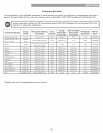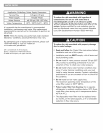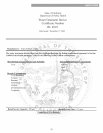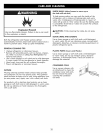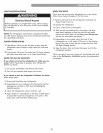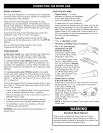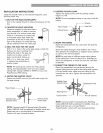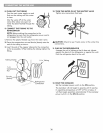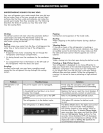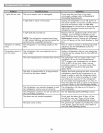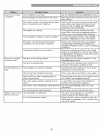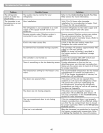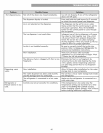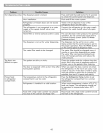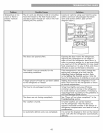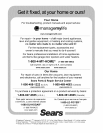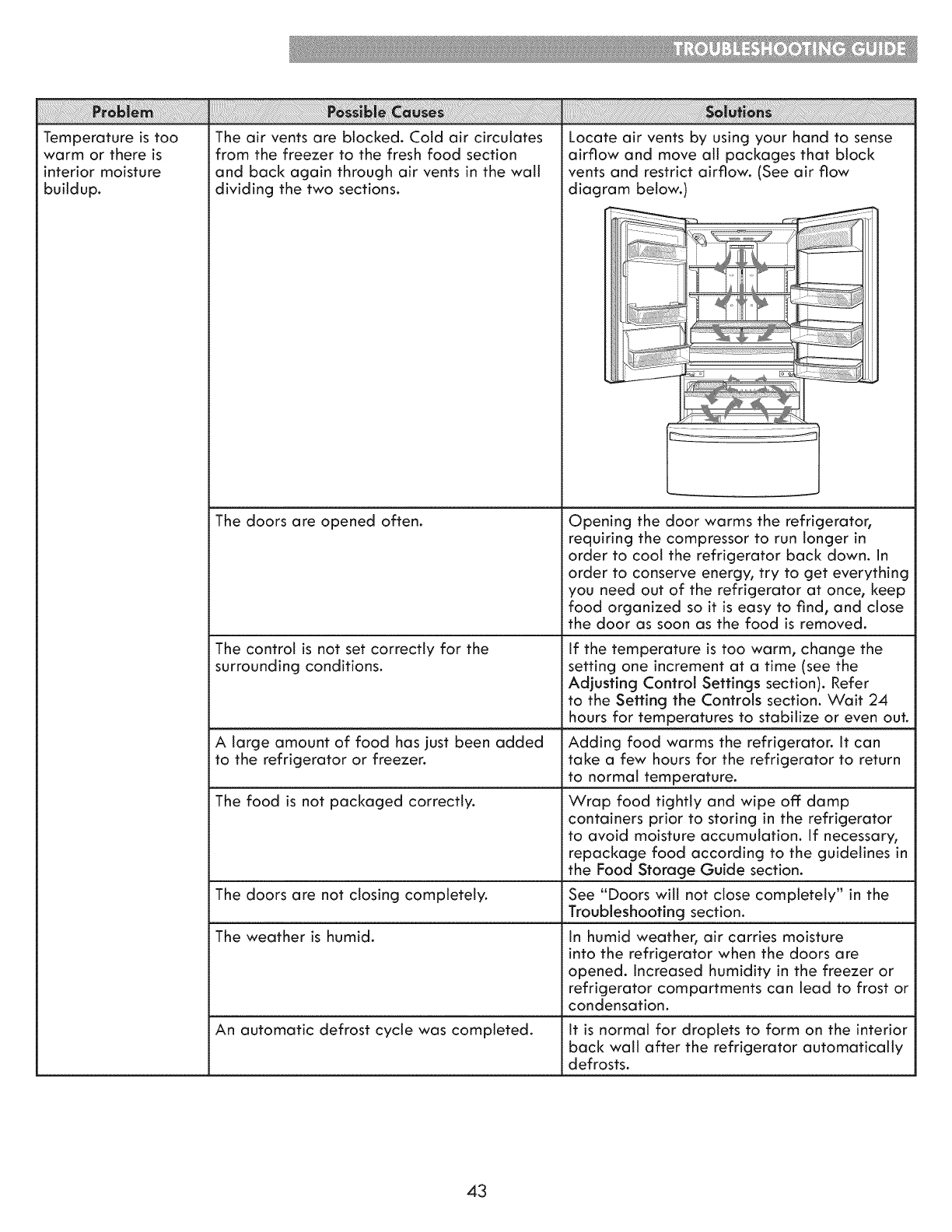
Temperature is too
warm or there is
interior moisture
buildup.
The air vents are blocked. Cold air circulates
from the freezer to the fresh food section
and back again through air vents in the wall
dividing the two sections.
The doors are opened often.
The control is not set correctly for the
surrounding conditions.
A large amount of food has just been added
to the refrigerator or freezer.
The food is not packaged correctly.
Opening the door warms the refrigerator,
requiring the compressor to run longer in
order to cool the refrigerator back down. In
order to conserve energy, try to get everything
you need out of the refrigerator at once, keep
food organized so it is easy to find, and close
the door as soon as the food is removed.
If the temperature is too warm, change the
setting one increment at a time (see the
Adjusting Control Settings section). Refer
to the Setting the Controls section. Wait 24
hours for temperatures to stabilize or even out.
Adding food warms the refrigerator. It can
take a few hours for the refrigerator to return
to normal temperature.
Wrap food tightly and wipe off damp
containers prior to storing in the refrigerator
to avoid moisture accumulation. If necessary,
repackage food according to the guidelines in
the Food Storage Guide section.
The doors are not closing completely. See "Doors will not close completely '_in the
Troubleshooting section.
The weather is humid.
An automatic defrost cycle was completed.
In humid weather, air carries moisture
into the refrigerator when the doors are
opened. Increased humidity in the freezer or
refrigerator compartments can lead to frost or
condensation.
It is normal for droplets to form on the interior
back walt after the refrigerator automatically
defrosts.
43



